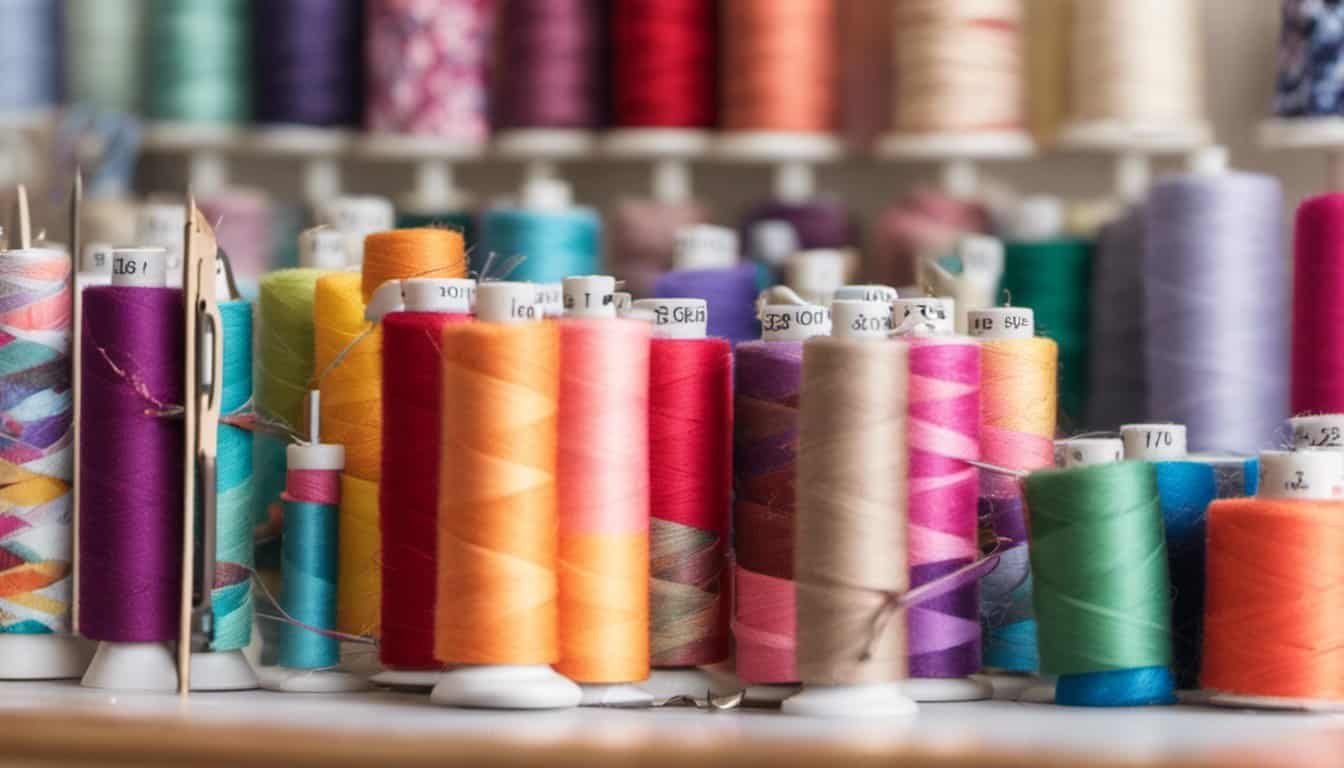Embarking on the journey of sewing traditional European lace opens up a world of intricate beauty and timeless craftsmanship. You’ll find yourself connecting with centuries-old techniques that have been passed down through generations, each stitch telling a story of dedication and artistry.
Imagine the delicate patterns unfolding under your fingertips as you create stunning lace pieces that add elegance to any garment or home decor. Whether you’re a seasoned seamstress or just starting out, embracing these classic methods can bring a rewarding sense of accomplishment and a touch of European charm to your creations.
Dive in and discover the secrets of traditional lace-making, where patience meets precision and every project becomes a beautiful masterpiece.
History of European Lace
European lace boasts a storied past, showcasing the continent’s intricate craftsmanship and artistic flair.
Origins and Evolution
Lace-making in Europe began in the late 15th century, originating in regions like Venice and Bruges. Initially crafted by hand, lace served as a luxury item among the aristocracy. During the 16th century, advancements in techniques such as bobbin and needle lace emerged, allowing for more intricate designs. The Industrial Revolution in the 19th century introduced machine-made lace, making it more accessible while also preserving traditional handmade methods. Today, European lace continues to evolve, blending classic techniques with modern innovations to maintain its timeless appeal.
Regional Styles
- Venetian Lace: Originating from Venice, this needle lace is known for its elaborate patterns and fine threadwork.
- Alençon Lace: Hailing from Alençon, France, this point lace features delicate floral motifs and a soft, airy appearance.
- Brussels Lace: From Brussels, Belgium, this bobbin lace is characterized by its intricate geometric patterns and motifs inspired by nature.
- Irish Lace: Produced in Ireland, this lace often incorporates delicate motifs like flowers and leaves, using both needle and bobbin techniques.
- Spanish Lace: Known for its bold and colorful designs, Spanish lace combines traditional patterns with vibrant threads for a distinctive look.
| Regional Style | Origin | Key Characteristics |
|---|---|---|
| Venetian Lace | Venice, Italy | Elaborate patterns, fine threadwork |
| Alençon Lace | Alençon, France | Delicate floral motifs, airy appearance |
| Brussels Lace | Brussels, Belgium | Intricate geometric patterns, natural motifs |
| Irish Lace | Ireland | Delicate flowers and leaves, mixed techniques |
| Spanish Lace | Spain | Bold, colorful designs, vibrant threads |
Essential Tools and Materials
To create beautiful traditional European lace, you need specific tools and materials. Having the right supplies ensures precision and enhances the quality of your lacework.
Types of Threads
Choosing the appropriate thread is crucial for intricate lace designs. Different threads offer varying textures and strengths.
- Linen Threads: Durable and smooth, ideal for delicate patterns.
- Cotton Threads: Soft and versatile, suitable for various lace types.
- Silk Threads: Lustrous and strong, perfect for elaborate and high-quality lace.
- Metallic Threads: Add shine and decorative elements to your lace.
- Synthetic Threads: Resistant to fraying and easy to work with, good for beginners.
Necessary Sewing Tools
Equipping yourself with the right tools makes lace-making efficient and enjoyable. Here are essential tools for sewing traditional European lace:
- Lace Needles: Fine, sharp needles designed for detailed work.
- Bobbin Set: Includes bobbins and bobbin cases for controlling thread tension.
- Thimble: Protects your fingers while handling needles.
- Scissors: Small, sharp scissors for precise cutting of threads.
- Embroidery Hoop: Keeps your fabric taut for accurate stitching.
- Measuring Tape: Ensures accurate measurements for lace patterns.
- Pattern Templates: Guides for creating consistent lace designs.
- Light Source: Adequate lighting to see fine details clearly.
- Magnifying Glass: Enhances visibility for intricate stitching.
- Storage Containers: Organize threads, needles, and other small tools.
Having these tools and materials on hand prepares you to embark on your lace-making journey with confidence and ease.
Techniques for Sewing Traditional Lace
Mastering traditional lace sewing involves a blend of meticulous hand techniques and modern machine sewing tips. These methods ensure your lace projects achieve the intricate beauty and durability characteristic of European heritage.
Hand Stitching Methods
Hand stitching remains the cornerstone of traditional European lace-making. Here are key techniques you should master:
- Needle Lace: Create delicate patterns using a needle and thread. This method involves forming intricate designs without the use of bobbins.
- Bobbin Lace: Utilize a set of bobbins to weave threads into complex geometric or floral patterns. Key steps include tying knots and creating twists.
- Point Lace: Focus on detailed motifs like flowers and leaves. Precision is essential to maintain symmetry and fine detail.
- Buttonhole Stitch: Use this versatile stitch for reinforcing edges and adding decorative elements. It provides strength and a neat finish.
Machine Sewing Tips
Integrating machine sewing can enhance efficiency while maintaining traditional lace quality. Consider these tips:
- Choose the Right Needle: Use a fine needle, such as a size 60/8, to prevent thread breaks and ensure smooth stitching on delicate lace.
- Adjust Tension Settings: Lower the tension to accommodate lightweight threads and avoid puckering. Test on scrap lace to find the optimal setting.
- Use Lightweight Threads: Opt for silk or fine polyester threads to mimic the subtlety of hand-stitched lace.
- Stabilize Your Fabric: Apply a tear-away or water-soluble stabilizer to support the lace during sewing, which helps maintain intricate patterns.
- Employ a Walking Foot: This accessory allows even feeding of multiple layers, crucial for maintaining consistent stitch quality on complex lace designs.
- Slow Down Stitch Speed: Reducing the sewing speed increases control, resulting in more precise and accurate stitching on delicate lace.
By combining these hand and machine techniques, you can achieve the exquisite detail and craftsmanship that define traditional European lace.
Popular Lace Patterns
Exploring popular lace patterns enhances your ability to create stunning traditional European lace pieces. Each pattern offers unique aesthetics and techniques.

Floral Designs
Floral designs showcase delicate petals and leaves, reflecting nature’s beauty. These patterns originated in regions like Alençon and Irish lace, known for their intricate floral motifs. You can incorporate roses, daisies, and ivy into your lacework, adding elegance to garments and home decor.
Geometric Patterns
Geometric patterns emphasize symmetry and precision, featuring shapes like hexagons, stars, and diamonds. Originating from Brussels and Venetian lace, these designs display intricate geometric arrangements. Use these patterns to create bold, structured lace pieces that highlight your craftsmanship and attention to detail.
Maintenance and Preservation
Proper maintenance extends the lifespan of your traditional European lace, ensuring its beauty endures. Follow these guidelines to care for your delicate creations effectively.
Cleaning
- Dry Cleaning: Use professional dry cleaners experienced with fine lace to prevent damage.
- Hand Washing: Gently wash in cold water with mild detergent. Soak for no more than five minutes.
- Air Drying: Lay flat on a clean towel away from direct sunlight to prevent fading and weakening fibers.
Storage
- Flat Storage: Store lace flat in a dry, cool area to avoid stretching and distortion.
- Acid-Free Materials: Use acid-free tissue paper or storage boxes to protect against yellowing and deterioration.
- Climate Control: Maintain a stable environment with low humidity and temperatures between 60-70°F (15-21°C).
Handling
- Clean Hands: Always handle lace with clean, dry hands to prevent oils and dirt from transferring.
- Gloves: Wear cotton gloves when possible to minimize contact and reduce the risk of tears.
- Support: Provide adequate support when moving or wearing lace to avoid unnecessary stress on intricate patterns.
Repair
- Small Tears: Use a fine needle and matching thread to carefully mend minor damages without altering the design.
- Professional Restoration: Seek experts for significant repairs to maintain structural integrity and aesthetic quality.
- Reinforcement: Add stabilizing threads or tissue to fragile areas to prevent further wear.
Environmental Factors
- Light Exposure: Keep lace away from direct sunlight to prevent discoloration and fiber degradation.
- Moisture Control: Avoid damp areas to reduce the risk of mildew and fiber weakening.
- Pest Prevention: Store in pest-free environments and regularly inspect for signs of insect damage.
Display
- Framing: Use UV-protective glass and acid-free mats to preserve lace when framing.
- Avoid Tension: Ensure framed lace is not stretched tightly, allowing natural drape and preventing distortion.
- Regular Inspection: Check displayed lace periodically for signs of wear or environmental damage.
By adhering to these maintenance and preservation techniques, you ensure your traditional European lace remains a stunning part of your collection for years to come.
Conclusion
Embracing traditional European lace sewing opens up a world of creativity and timeless beauty. As you weave each delicate thread, you’ll connect with centuries of craftsmanship and artistry. Enjoy the process of bringing intricate patterns to life and take pride in every elegant piece you create. Whether you’re enhancing your wardrobe or adding charm to your home, sewing lace offers a rewarding and fulfilling experience. Keep exploring and experimenting with different techniques and styles, and let your passion for lace-making flourish. Your dedication and skill will turn beautiful visions into reality, preserving a cherished tradition for generations to come.

















